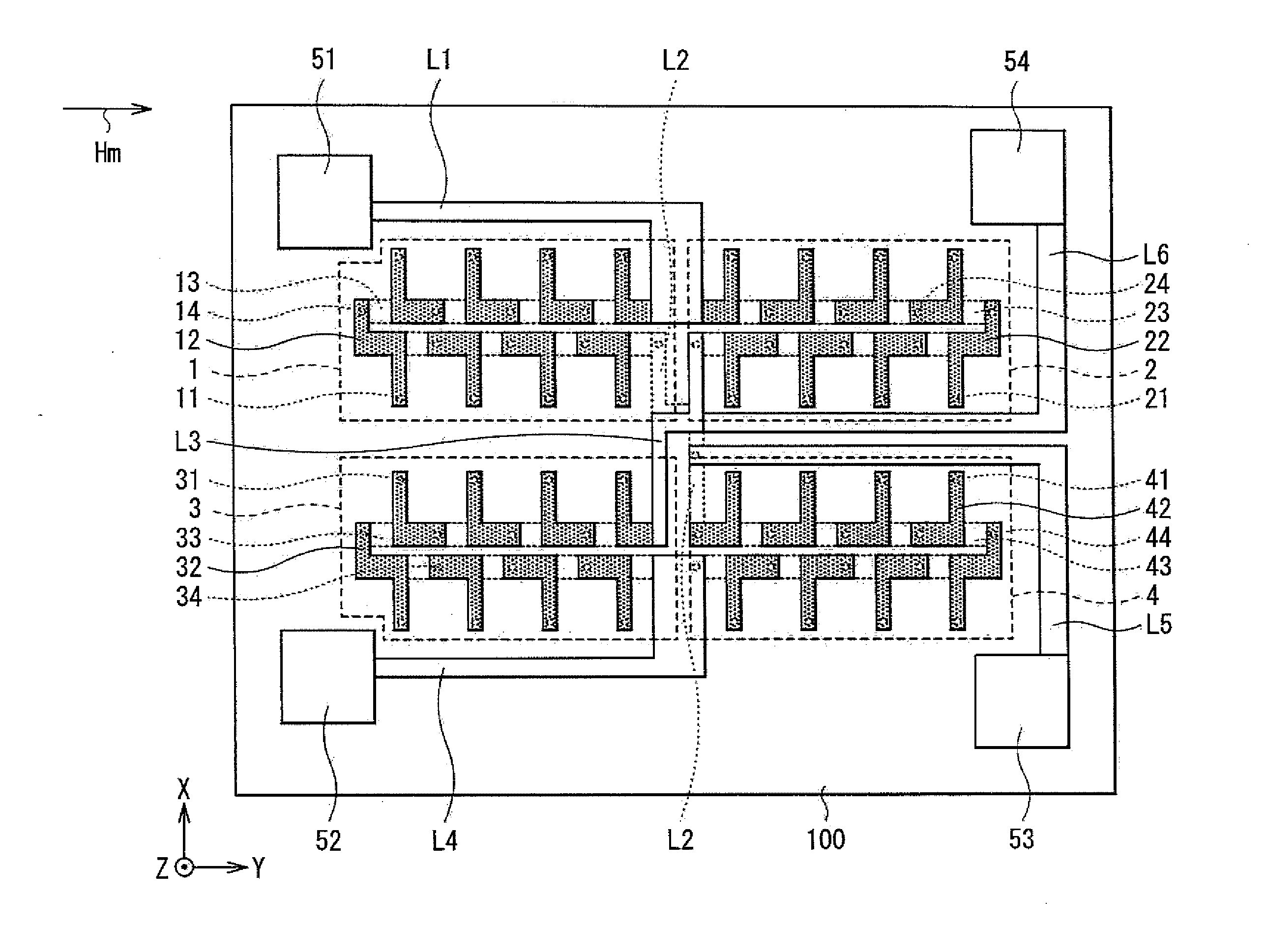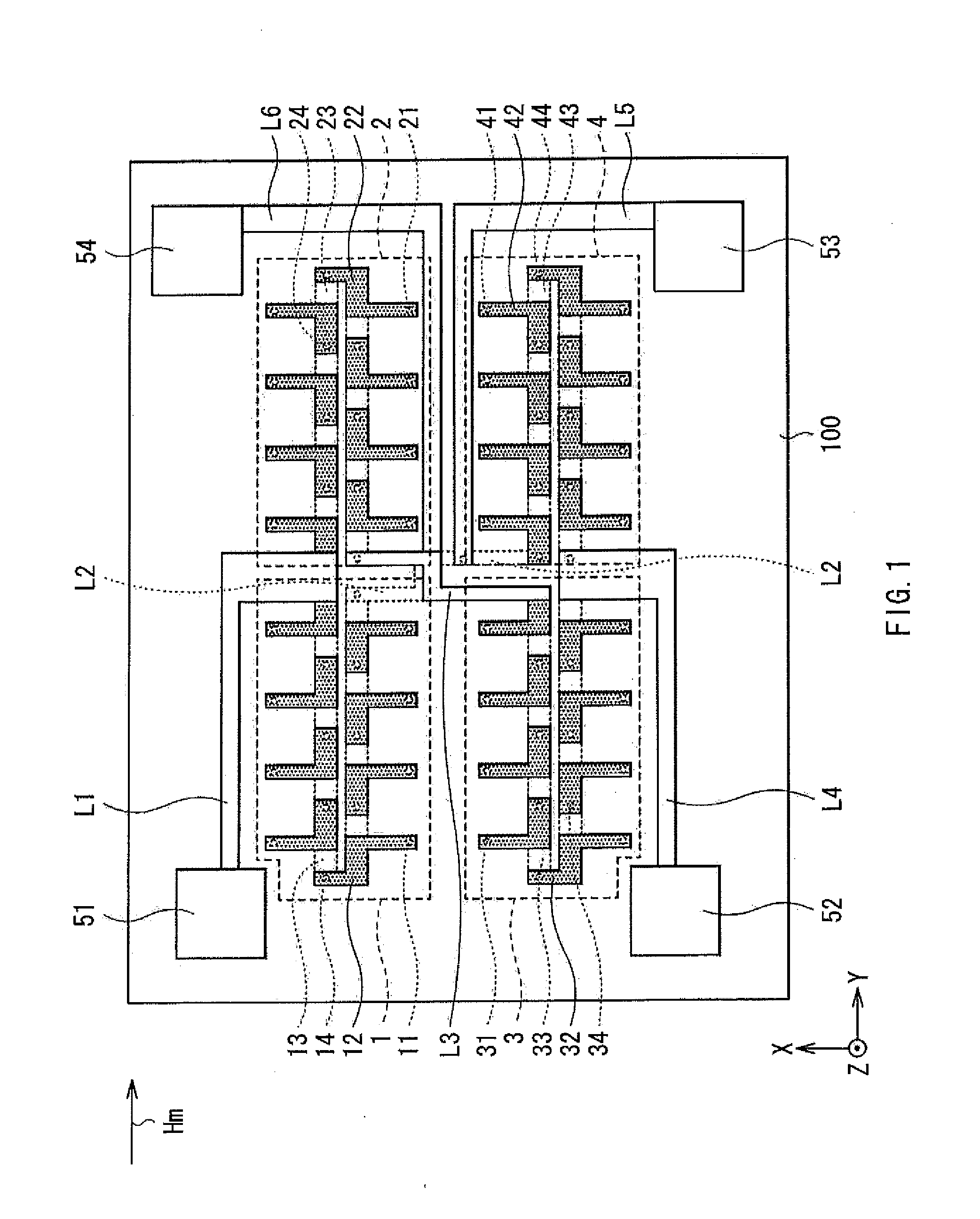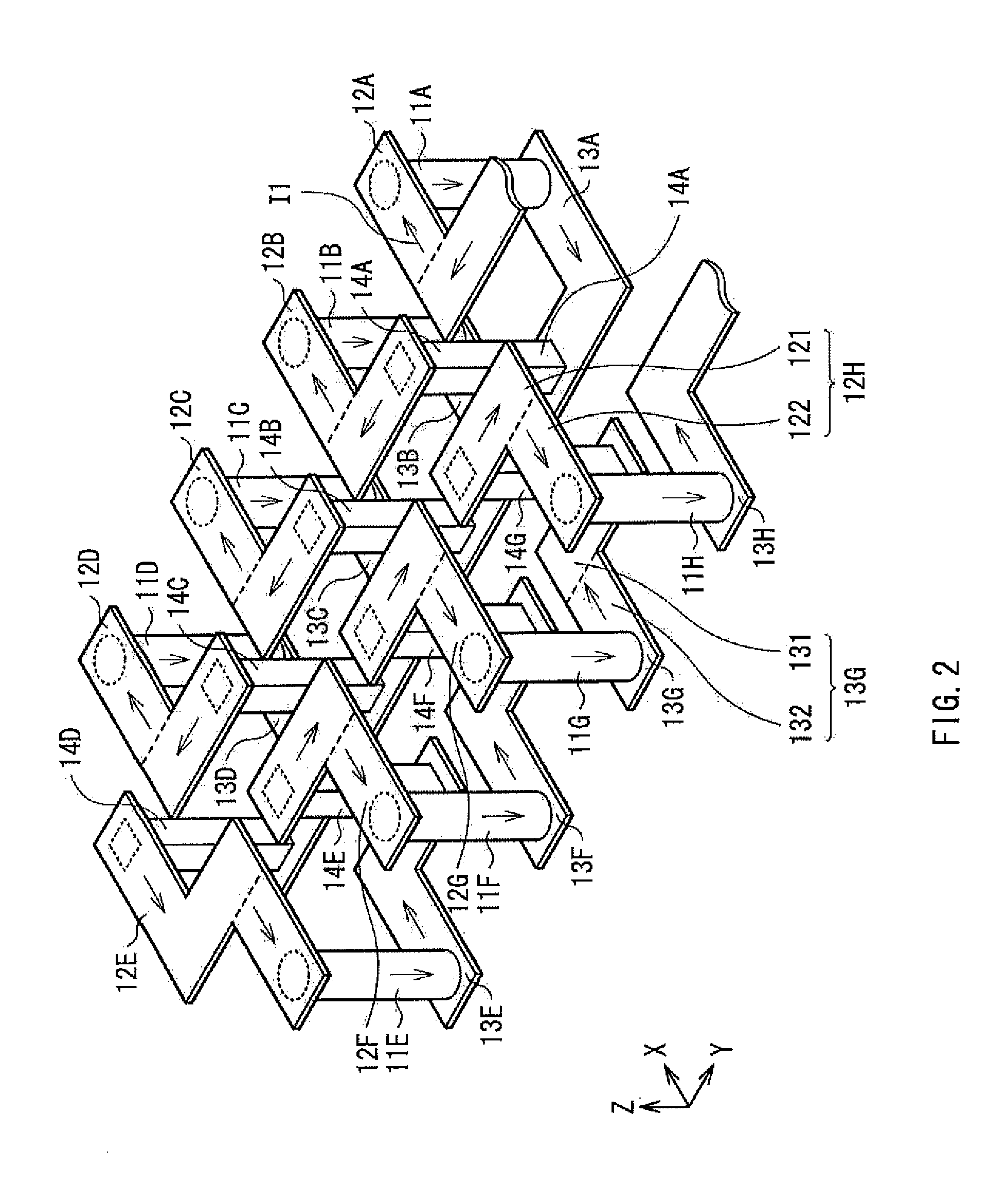Magnetic sensor
a technology of magnetic sensor and sensor, applied in the field of magnetic sensor, can solve the problems of improving stability and far from a performance level that is sufficiently stable, and achieve the effect of reducing the resistance of the top electrode and the bottom electrode, detecting the signal magnetic field further accurately, and reducing the variation in behavior
- Summary
- Abstract
- Description
- Claims
- Application Information
AI Technical Summary
Benefits of technology
Problems solved by technology
Method used
Image
Examples
first embodiment
[0040]First, a configuration of a magnetic sensor according to a first embodiment of the invention will be described with reference to FIGS. 1 to 16B. FIG. 1 is a plan view illustrating an overall configuration of the magnetic sensor according to the first embodiment. FIG. 2 is an enlarged perspective view illustrating a main configuration of the magnetic sensor.
[0041]The magnetic sensor according to this embodiment includes first to fourth magnetoresistive (MR: Magneto-Resistive effect) elements 1 to 4 (hereinafter may be simply referred to as “MR elements”), pads 51 to 54, interconnections L1 to L6, and a difference detector AMP (which will be described later), and so forth, which are provided on a substrate 100. The magnetic sensor detects a direction and a magnitude of a signal magnetic field Hm which changes in a certain plane of rotation (in an XY plane in this embodiment). For example, the pad 51 is connected to a power source Vcc which will be described later, and the pad 52...
first modification
[First Modification]
[0078]Hereinafter, a first modification of the magnetic sensor according to the first embodiment will be described. In the first embodiment described above, all of the magnetization fixed layers 63 of the stacked bodies 11, 21, 31, and 41 in the first MR elements 1 to 4 have the synthetic structure. However, in the first modification, the magnetization fixed layers 63 in the first and the third MR elements 1 and 3 each may be configured by a single ferromagnetic material layer or by a plurality of ferromagnetic material layers, instead of the synthetic structure. On the other hand, the second and the fourth MR elements 2 and 4 each have the synthetic structure similar to that of the embodiment described above. That is, the total magnetic moment MOP of the pinned layer 633 is made larger than the total magnetic moment MIP of the pinned layer 631.
[0079]As in the embodiment described above, this modification also makes it possible to allow the orientation of the mag...
second embodiment
[0080]Now, a configuration of a magnetic sensor according to a second embodiment of the invention will be described with reference to figures including FIG. 17. FIG. 17 schematically illustrates a configuration of a magnetic field detecting circuit in the magnetic sensor according to the second embodiment. The magnetic sensor of this embodiment has a configuration similar to that of the first embodiment described above, except that the first MR element 1 is replaced by a second constant current source CG2, and that the second MR element 2 is replaced by a first constant current source CG1. Note that the same or equivalent elements as those of the first embodiment described above are denoted with the same reference numerals, and will not be described in detail.
[0081]Referring to FIG. 17, the first constant current source CG1 and the second constant current source CG2 supply the third MR element 3 and the fourth MR element 4 with a constant current I1 and a constant current I2, having...
PUM
 Login to View More
Login to View More Abstract
Description
Claims
Application Information
 Login to View More
Login to View More - R&D
- Intellectual Property
- Life Sciences
- Materials
- Tech Scout
- Unparalleled Data Quality
- Higher Quality Content
- 60% Fewer Hallucinations
Browse by: Latest US Patents, China's latest patents, Technical Efficacy Thesaurus, Application Domain, Technology Topic, Popular Technical Reports.
© 2025 PatSnap. All rights reserved.Legal|Privacy policy|Modern Slavery Act Transparency Statement|Sitemap|About US| Contact US: help@patsnap.com



